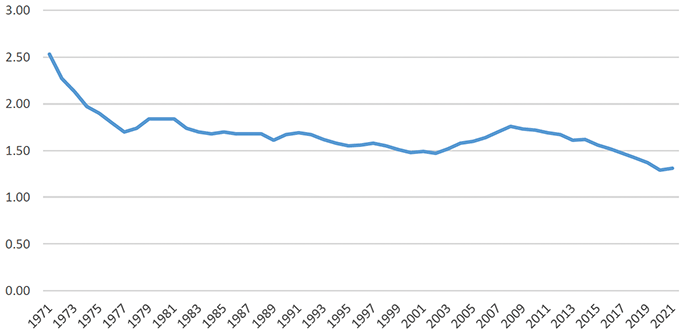Attitudes to family formation in Scotland
This report summarises the findings of two research studies commissioned externally by the Ministerial Population Taskforce on attitudes to family formation and ideal family size in Scotland. It includes the full report of the qualitative research exploring barriers and enablers of ideal family size
Introduction
Scotland faces a range of demographic challenges, such as an ageing population and a continued fall in birth rates. These challenges will affect the future age structure of Scotland's population, which is projected to peak in 2028 and thereafter start to decline. This is primarily due to the number of deaths outweighing births, and not enough inward migration to compensate.
In March 2021, the Scottish Government's Ministerial Population Taskforce published Scotland's first national Population Strategy, entitled 'A Scotland for the future: opportunities and challenges of Scotland's changing population', in order to focus new work on population change in Scotland. Much of the Strategy focuses on migration – particularly in the aftermath of Brexit - and the need for an immigration system to meet Scotland's needs, alongside trends such as ageing, local depopulation, and falling birth rates.
Scotland's total fertility rate (TFR; the average number of children born to each woman) has fallen from 2.5 in 1971 to 1.7 in 2007, to 1.31 in 2021. This is the second lowest ever recorded, after TFR fell to 1.29 in 2020.[1] Although this is a trend seen in other countries, Scotland has seen a particularly sharp decline and has currently the lowest fertility rate within the UK (for England and Wales, TFR was 1.61 in 2021).[2]

As part of the Family Friendly pillar in the Population Strategy, Scottish Government recognises families in all shapes and sizes. Equally, it sets out that it is not for government to make intrusive value judgements on issues relating to having children – emphasising these are of a deeply personal nature. Recognising this the Scottish Government commissioned research with the aim of increasing understanding and updating the evidence base around some of the drivers, changing norms, and potential barriers people face, which may have shaped the fall in Scotland's birth rate.
Contact
Email: population@gov.scot
There is a problem
Thanks for your feedback